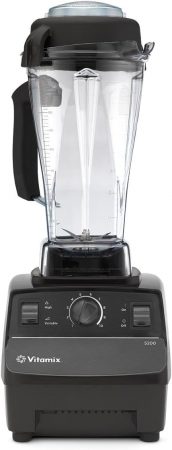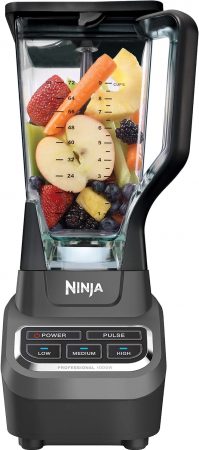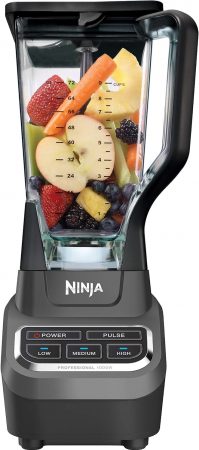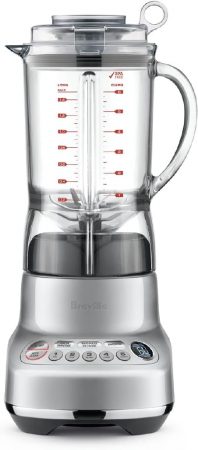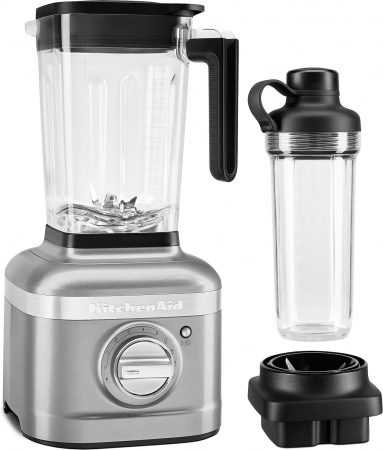Discover the Best Blender for Your Kitchen
Are you ready to make delicious smoothies, soups, and more with ease? A good blender can be your best friend in the kitchen. At shopoppy.com, we’re here to give you honest and detailed product reviews to help you pick the best products. Today, we’re taking a close look at blenders. Whether you’re a smoothie lover, a home cook, or just want to make meal prep easier, we’ve got all the information you need to choose the perfect blender. Let’s get started! 🥤
Why You Need a Blender
Blenders are incredibly versatile kitchen tools that can make cooking and meal prep easier, healthier, and more fun. Here are several reasons why a blender is a must-have appliance in your kitchen:
1. Make Delicious Smoothies and Shakes
Blenders are perfect for creating smoothies and shakes. Whether you love a green smoothie packed with spinach and kale or a sweet, fruity blend, a blender can mix it all into a tasty and nutritious drink. It’s a great way to consume more fruits and vegetables.
3. Simplify Meal Prep
Chopping, mixing, and pureeing can be time-consuming. A blender can take care of these tasks quickly and efficiently, saving you time and effort. Whether you’re making hummus, pesto, or pancake batter, a blender can make the process faster and easier.
5. Versatility in the Kitchen
Blenders aren’t just for drinks and soups. You can use them to grind coffee beans, make dough for bread or pizza, crush ice for cocktails, and even make homemade beauty products like face masks and scrubs. The possibilities are endless!
7. Entertain Guests
A blender can be a great tool for entertaining. Make frozen cocktails, dips, and spreads to impress your guests. With a blender, you can quickly prepare a variety of dishes and drinks that will delight your family and friends.
9. Eco-Friendly
Using a blender to make your own food can reduce waste. You can use fresh, whole ingredients, reducing the need for packaged goods that often come with excess plastic and other waste materials.
2. Create Creamy Soups and Sauces
Blend up velvety soups and sauces right in your kitchen. From creamy tomato soup to rich Alfredo sauce, a blender can handle both hot and cold ingredients, helping you create smooth, restaurant-quality dishes at home.
4. Support Healthy Eating
A blender can help you maintain a healthy diet by allowing you to make wholesome meals and snacks. Blend up a nutritious breakfast smoothie, make homemade nut butters without added sugars or preservatives, or whip up a batch of fresh baby food with organic ingredients.
6. Cost-Effective
Making your own smoothies, soups, and sauces at home is often cheaper than buying pre-made versions. Over time, investing in a good blender can save you money and help you avoid the additives and preservatives found in many store-bought products.
8. Customizable to Your Needs
Unlike pre-packaged foods, blending your own meals and snacks allows you to control the ingredients. This is especially important for people with dietary restrictions or allergies. You can customize recipes to suit your taste and health needs.
10. Fun and Creative
Experimenting with a blender can be a fun way to try new recipes and ingredients. It encourages creativity in the kitchen, allowing you to explore different textures and flavors.
Key Features to Look For
When choosing a blender, there are several important features to consider to ensure you get the best one for your needs. Here’s a detailed look at what to keep in mind:
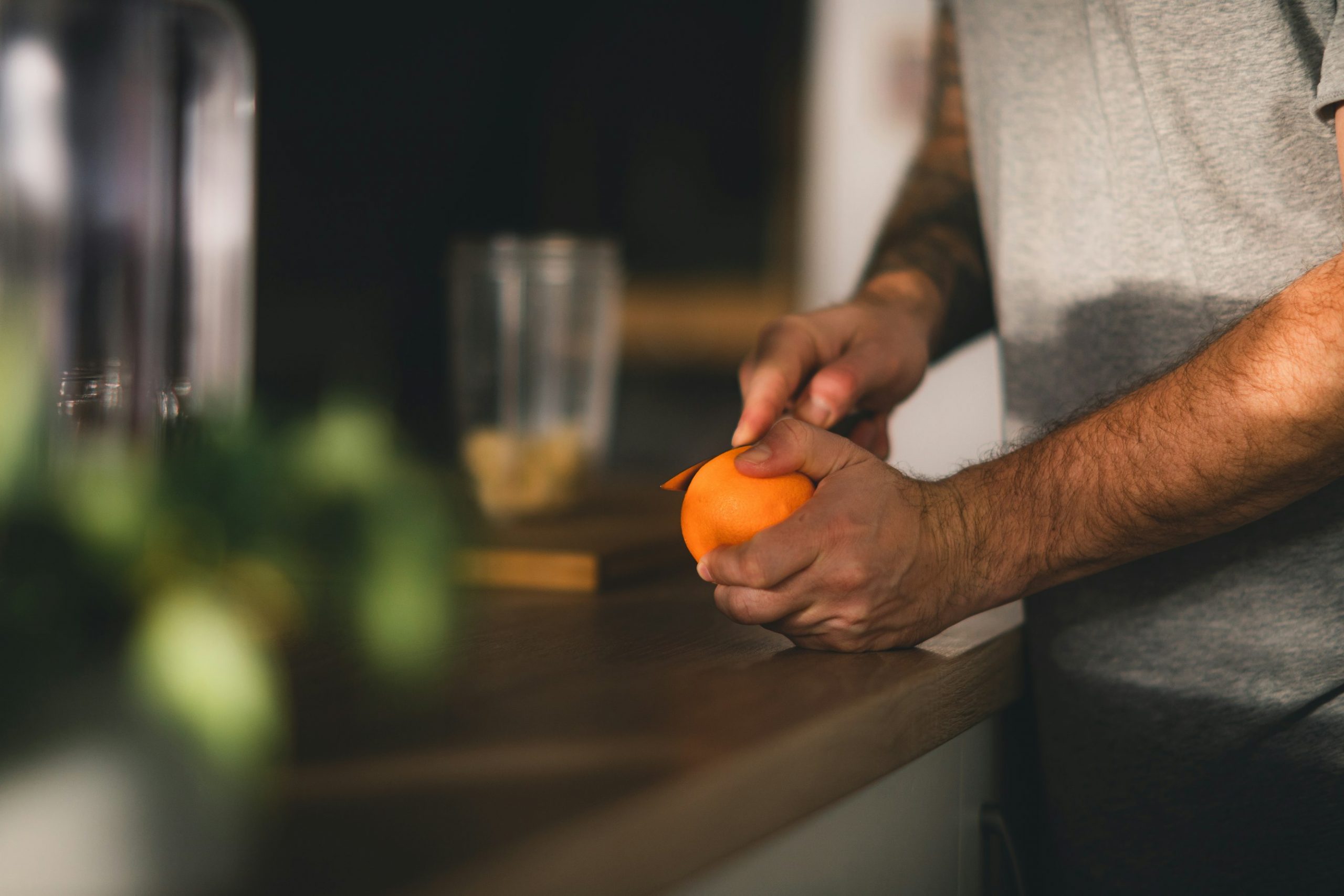
1. Power
The power of a blender is crucial as it determines how well it can handle different tasks. Blender power is measured in watts, and here’s what you need to know:
- Less than 300 Watts: Suitable for basic tasks like blending soft fruits and making simple smoothies.
- 300-600 Watts: Ideal for most home uses, including making smoothies, soups, and crushing ice.
- 600+ Watts: Best for heavy-duty tasks like making nut butters, grinding grains, and handling large quantities of ice.
2. Blades
Blades are essential for the efficiency and versatility of a blender. Here are the key aspects:
- Material: Stainless steel blades are the most common and preferred due to their durability and rust resistance.
- Design: Multi-blade designs ensure thorough blending, chopping, and pureeing. Look for blenders with angled blades that can create a vortex to pull ingredients down for an even blend.
3. Speed Settings
Different speed settings give you more control over the texture and consistency of your blends:
- Single Speed: Simple to use but offers limited control.
- Multiple Speeds: Allow for more precise blending, perfect for different types of ingredients and recipes.
- Pulse Function: Provides bursts of power, which is useful for chopping and mixing without over-processing.
4. Jar Material
The material of the blender jar affects its durability, weight, and ease of use:
- Plastic: Lightweight and less likely to break, but can scratch and absorb odors over time. Look for BPA-free plastic to ensure it’s safe.
- Glass: Heavier and more durable than plastic, it doesn’t absorb odors or stains but can break if dropped.
- Stainless Steel: Very durable and often insulated to keep contents hot or cold, but you can’t see inside to monitor blending progress.
5. Capacity
The size of the blender jar determines how much you can blend at once:
- Personal-Sized (Single-Serve): Typically 12-20 ounces, ideal for making single servings of smoothies or shakes.
- Standard Size: Generally 48-64 ounces, perfect for families or larger batches of soups and sauces.
- Large Capacity: Over 64 ounces, suitable for entertaining or preparing large quantities at once.
6. Ease of Cleaning
Cleaning your blender should be easy to encourage regular use:
- Dishwasher-Safe Parts: Look for blenders with jars, lids, and blades that are dishwasher-safe for easy cleaning.
- Removable Blades: Blenders with removable blades are easier to clean thoroughly.
- Self-Cleaning Function: Some high-end blenders have a self-cleaning mode; just add water and a drop of dish soap, then run the blender.
7. Noise Level
Blenders can be loud, especially powerful ones. Consider the noise level if you have a preference for quieter appliances:
- High-Power Models: Typically noisier but offer more functionality.
- Noise-Reduction Features: Some blenders are designed with noise-dampening technology to minimize disruption.
8. Durability and Warranty
A good blender should last several years, so durability is key:
- Build Quality: Look for solid construction with high-quality materials.
- Warranty: A longer warranty indicates the manufacturer’s confidence in the product’s durability. Many top brands offer warranties ranging from 1 to 7 years.
9. Additional Features
Consider these extra features that can enhance the functionality of your blender:
- Pre-Programmed Settings: Blenders with pre-set programs for smoothies, soups, ice crushing, etc., make it easier to achieve perfect results every time.
- Tamper Tool: Helps push down ingredients towards the blades without stopping the blender, useful for thick mixtures.
- Multiple Attachments: Some blenders come with additional attachments like food processor bowls, single-serve cups, and milling blades.
10. Price
Your budget will also play a significant role in your decision:
- Budget Blenders: Usually under $100, suitable for basic blending tasks.
- Mid-Range Blenders: Between $100-$300, offering more power and features.
- High-End Blenders: Over $300, these models are highly durable, powerful, and versatile, often with extended warranties.
By keeping these features in mind, you can choose a blender that fits your needs and preferences, ensuring you get the best performance and value for your money.
Top Blenders on the Market
Choosing the right blender can be overwhelming with so many options available. Here are seven of the best blenders on the market, complete with details and mini-reviews to help you make an informed decision:
1. Vitamix 5200
- Power: 1380 watts
- Features: Variable speed control, large 64-ounce container, stainless steel blades.
- Pros: Extremely durable, versatile, easy to clean, can handle a variety of tasks from smoothies to soups.
- Cons: Expensive, noisy.
The Vitamix 5200 is a top choice for serious home cooks and professionals. Its powerful motor and variable speed control make it incredibly versatile. It’s a bit of an investment, but its durability and performance justify the price. Perfect for those who need a reliable, high-performance blender.
2. Blendtec Total Classic Original Blender
- Power: 1560 watts
- Features: 10-speed manual control, pre-programmed cycles, 75-ounce container.
- Pros: Powerful, versatile, self-cleaning function, large capacity.
- Cons: Can be noisy, bulky.
The Blendtec Total Classic is known for its robust power and large capacity. It’s excellent for large families or those who love entertaining. The pre-programmed cycles make it easy to use, and the self-cleaning function is a bonus. However, it’s quite loud and takes up a lot of counter space.
3. Ninja Professional Countertop Blender
- Power: 1100 watts
- Features: 3 speeds, pulse, and single-serve functions, 72-ounce pitcher.
- Pros: Affordable, powerful, comes with additional single-serve cups.
- Cons: Can be bulky, not as durable as higher-end models.
The Ninja Professional is a great budget-friendly option that doesn’t compromise on power. It’s versatile enough for a variety of tasks and includes single-serve cups for added convenience. It’s perfect for those looking for a powerful blender without breaking the bank.
4. NutriBullet Pro
- Power: 900 watts
- Features: Compact design, easy to use, comes with multiple cups and lids.
- Pros: Affordable, easy to clean, perfect for smoothies, compact.
- Cons: Limited capacity, not suitable for heavy-duty tasks.
The NutriBullet Pro is perfect for personal use, especially if you love making smoothies. Its compact design makes it ideal for small kitchens, and it’s easy to use and clean. However, it’s not designed for heavy-duty tasks and larger batches.
5. Breville Fresh & Furious Blender
- Power: 1100 watts
- Features: 5-speed settings, LCD display, pre-programmed settings, 50-ounce container.
- Pros: Quiet, versatile, easy to use, sleek design.
- Cons: Smaller capacity, mid-range price.
The Breville Fresh & Furious is a sleek, modern blender that’s quiet and efficient. It’s versatile enough for most tasks and has a user-friendly design with an LCD display. It’s perfect for those who want a good balance between functionality and style.
6. Oster Pro 1200 Blender
- Power: 1200 watts
- Features: Dual-direction blade technology, 7 speeds including 3 pre-programmed settings, 24-ounce smoothie cup.
- Pros: Affordable, versatile, durable, extra smoothie cup.
- Cons: Can be noisy, glass jar can be heavy.
The Oster Pro 1200 offers great value for its price. With strong power and versatile settings, it can handle a variety of tasks efficiently. The dual-direction blade technology ensures thorough blending. It’s a solid choice for budget-conscious buyers who still want quality and performance.
7. KitchenAid K400 Blender
- Power: 1200 watts
- Features: 5-speed settings, Intelli-Speed Motor Control, 56-ounce jar.
- Pros: Stylish design, powerful, reliable, easy to clean.
- Cons: Mid-range price, less capacity than some competitors.
The KitchenAid K400 combines power with style. It’s powerful enough for most blending tasks and has a reliable performance. The Intelli-Speed Motor Control adapts to the ingredients to ensure smooth blending. It’s a great option for those who want a stylish and efficient blender without going for the highest-end models.
Tips for Using Your Blender
Using your blender effectively can help you achieve the best results and prolong the life of your appliance. Here are some helpful tips to get the most out of your blender:
1. Layer Ingredients Correctly
To ensure smooth and efficient blending, layer your ingredients in the right order:
- Liquids First: Start with liquids like water, juice, or milk. This helps create a vortex that pulls down other ingredients.
- Soft Ingredients Next: Add soft ingredients like yogurt, fresh fruits, and vegetables.
- Harder Ingredients Last: Place harder items like frozen fruits, ice, nuts, and seeds on top.
2. Use the Pulse Function
The pulse function gives you bursts of power and better control over the blending process. Use it for tasks like:
- Chopping Vegetables: Pulse a few times to get evenly chopped vegetables without turning them into puree.
- Mixing Thick Ingredients: Pulse to mix thick or sticky ingredients like dough or batter.
3. Don’t Overfill the Blender
Avoid filling the blender jar beyond its maximum capacity. Overfilling can:
- Cause Spills and Messes: The blender may overflow, making a mess.
- Strain the Motor: Overloading the blender can strain the motor and reduce its lifespan.
4. Blend in Batches if Needed
If you have a large quantity to blend, do it in batches. This ensures smoother blends and prevents overloading the blender.
5. Start Slow and Gradually Increase Speed
Begin blending at a low speed and gradually increase to a higher speed. This:
- Prevents Splattering: Reduces the risk of ingredients splattering out of the blender.
- Ensures Even Blending: Helps all ingredients blend evenly without getting stuck.
6. Use the Tamper Tool
If your blender comes with a tamper tool, use it to push down ingredients towards the blades without stopping the blender. This is especially useful for thick mixtures like nut butters or frozen desserts.
7. Add Liquids for Easier Blending
If your mixture is too thick and not blending well, add a little liquid to help. This can be water, juice, milk, or any liquid that suits your recipe.
8. Clean Your Blender Immediately After Use
To keep your blender in good condition and prevent food from drying and sticking:
- Quick Rinse: Rinse the jar immediately after use.
- Self-Cleaning: For blenders with a self-cleaning function, add warm water and a drop of dish soap, then run the blender on a high setting for 30-60 seconds.
- Hand Wash: For a more thorough clean, disassemble the parts and wash them by hand.
9. Avoid Blending Hot Liquids Without Precautions
Blending hot liquids can be dangerous and cause the lid to blow off:
- Cool First: Let hot liquids cool slightly before blending.
- Vent the Lid: Use a vented lid or remove the center cap of the lid to allow steam to escape, and cover the opening with a towel to prevent splatters.
10. Store Your Blender Properly
When not in use, store your blender in a safe place to avoid damage:
- Disassemble: Disassemble the parts, clean them thoroughly, and let them dry completely.
- Protect the Blades: Store the blades in a safe place to avoid dulling or damage.
11. Experiment with Different Recipes
Don’t limit your blender to just smoothies. Experiment with:
- Soups and Sauces: Blend ingredients for creamy soups and smooth sauces.
- Dips and Spreads: Make hummus, guacamole, and other delicious dips.
- Nut Butters: Create homemade nut butters using your favorite nuts.
- Baked Goods: Mix batters and doughs for pancakes, muffins, and more.
12. Use Frozen Ingredients for Thicker Blends
For thick smoothies and frozen desserts, use frozen fruits and ice. This creates a creamy, thick texture without needing too much liquid.
13. Check for Leaks and Wear
Regularly check your blender for leaks, cracks, or wear and tear:
- Gaskets and Seals: Ensure gaskets and seals are in good condition to prevent leaks.
- Blades: Check the blades for sharpness and replace them if they become dull or damaged.
By following these tips, you can ensure your blender performs at its best and lasts for many years.
Frequently Asked Questions
What can I make with a blender?
Blenders are incredibly versatile and can be used to make a wide variety of recipes, including:
- Smoothies and shakes
- Soups and sauces
- Nut butters
- Baby food
- Ice cream and frozen desserts
- Dips and spreads like hummus and guacamole
- Pancake and waffle batter
- Cocktails and mocktails
How do I clean my blender?
Cleaning your blender is easy if you follow these steps:
- Quick Clean: Fill the jar halfway with warm water and a drop of dish soap. Blend on high for 30-60 seconds, then rinse thoroughly.
- Disassemble: For a deeper clean, disassemble the blender parts and wash them with warm, soapy water. Most parts are dishwasher-safe, but check the manufacturer’s instructions.
- Blades: Be careful when cleaning the blades, as they can be very sharp. Use a brush if needed to remove stuck-on food.
Can I blend hot liquids in my blender?
Yes, but with caution:
- Cool First: Let hot liquids cool slightly before blending.
- Vent the Lid: Use a vented lid or remove the center cap of the lid to allow steam to escape, and cover the opening with a towel to prevent splatters.
- Small Batches: Blend hot liquids in smaller batches to reduce the risk of the lid blowing off.
What’s the difference between a high-speed blender and a regular blender?
High-speed blenders, like Vitamix and Blendtec, have more powerful motors (typically over 1000 watts) and can handle tougher tasks like crushing ice, making nut butters, and grinding grains. Regular blenders usually have less power and are best for simpler tasks like making smoothies and pureeing soft ingredients.
How do I choose the right blender for me?
Consider the following factors when choosing a blender:
- Power: Higher wattage for tougher tasks.
- Blades: Stainless steel and multi-blade designs for better performance.
- Speed Settings: Multiple speeds and pulse functions for more control.
- Jar Material: Plastic for lightweight, glass for durability, stainless steel for insulation.
- Capacity: Choose based on your typical batch size.
- Ease of Cleaning: Dishwasher-safe parts and easy-to-remove blades.
- Budget: Decide how much you’re willing to spend.
Why is my blender not blending smoothly?
If your blender isn’t blending smoothly, try these tips:
- Layer Ingredients Correctly: Liquids first, soft ingredients next, harder items on top.
- Add Liquid: Add more liquid to help create a smoother blend.
- Pulse: Use the pulse function to break down larger pieces before blending continuously.
- Check Capacity: Ensure you’re not overfilling the blender jar.
Can I put my blender jar in the dishwasher?
Most blender jars are dishwasher-safe, but it’s always best to check the manufacturer’s instructions. Some high-end blenders have self-cleaning functions that make cleaning even easier.
How long should a blender last?
The lifespan of a blender depends on its quality and how often you use it. High-quality blenders like Vitamix or Blendtec can last 10 years or more with proper care. Regular maintenance and avoiding overloading the blender can help prolong its life.
What should I do if my blender stops working?
If your blender stops working:
- Check Power: Ensure it’s plugged in and the power outlet is working.
- Overload Protection: Some blenders have an overload protection feature that shuts off the motor. Let it cool down for 15-30 minutes and try again.
- Blades: Check if the blades are jammed or stuck. Clean them if necessary.
- Warranty: If it’s still under warranty, contact the manufacturer for repair or replacement.
Is it safe to blend ice in my blender?
Most high-power blenders can easily crush ice. If your blender is less powerful, make sure to use smaller ice cubes and add a bit of liquid to help with blending. Always check the manufacturer’s guidelines to ensure your blender is capable of handling ice.
Conclusion
A blender is an invaluable tool in any kitchen, offering versatility, convenience, and the ability to create a wide range of delicious and healthy recipes. From smoothies and soups to nut butters and sauces, the possibilities are endless. By understanding the key features to look for and considering your specific needs, you can choose the perfect blender that fits your lifestyle and budget.
Investing in a high-quality blender can save you time, money, and effort in the kitchen, making meal prep easier and more enjoyable. Whether you’re a smoothie enthusiast, a home chef, or just someone looking to simplify their cooking routine, a blender is a must-have appliance.
At shopoppy.com, we’re dedicated to providing you with the most honest and detailed product reviews to help you make informed decisions. We hope this comprehensive guide has answered your questions and given you the confidence to find the perfect blender for your kitchen.

